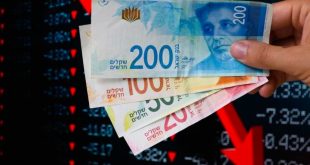
The weapon of criticism cannot, of course, replace criticism by weapons, material force must be tilted material strength;
but theory becomes a material force once it has gripped the masses.
Karl Marx,
Critique of the philosophy of law the Bourgeois economists say that the distribution of the social products among the members of society for both productive and personal consumption without money, i.e., purchase and sale, is simply impossible. This, they argue, is due to the fact that in the distribution of consumer goods inherent difficulties which can be remedied only by money; they say the money is in order and invented to eliminate the difficulties that arise in the distribution of consumer goods.
No words. Indeed, the direct distribution of commodities among members of society pose challenges that may be eliminated with the help of money. But the fact that in thousands of cases the distribution of consumer goods among members of society is done without money, shows that the bourgeois economists are blatantly lying. The question arises: why bourgeois economists obsessively impose on society the idea that the distribution of consumer goods among members of society has the character of absolute necessity?
The only correct answer to this question can be given only from the standpoint of commodity production, from which arise the money. But before proceeding to the consideration of this question, it is necessary to make two observations. First, commodity production √ it is such a production which products are produced not for own consumption and for sale, for a market exchange; a product manufactured for sale, for market exchange is called a commodity. Second, the form of management cannot be elected by people arbitrarily √ it depends on present conditions.
For the emergence and existence of commodity production requires a combination of two conditions: first, the social division of labor, i.e. such a division of labour, which does not arise from natural differences between people (gender, age, physical strength, talent, etc.), and the specialization of producers on the creation of certain products, and, second, the separation of the producers as private owners of the means of production. If there are no such conditions, then commodity production could not occur. So, as producers produce products for their own consumption but for consumption by others, therefore for public consumption, their labor is social in nature.
But, on the other hand, private ownership of the means of production divides them, makes the labour of the individual of his private. As a result of this split of labour (contradiction between private and social labor), producers are forced to engage in public contact with each other only by exchanging the products of their labour. Meanwhile, in exchange just enter heterogeneous goods, which by their natural properties generally comparable. Hence there are difficulties with the direct exchange of goods. Spontaneous resolution of these difficulties and leads to money
. “Money as little arise by agreement as by the state. They spontaneously arise from the exchange and in exchange, they are its product.” (Marx, Economic manuscripts of 1857 √ 1859). The exchange of commodities implies that they are equal to each other. But in exchange received only different goods (for example: meat and cloth), which are incomparable. But once they are equal, it follows that they must have something in common, not only different. What is in common between different products? Different products only have one thing in common that makes them comparable among themselves in the exchange, namely, that the production amount of physical and mental force of man is √ equal human labor.
Products exchanged between the first producers: the peasants and artisans, it is the products of their personal labor. What they spent in the manufacture of these products? Labor-and only labor: reimbursement tools, raw material, to process it they spent only their personal labor. Could they, therefore, exchanging these products for products from other manufacturers otherwise than in proportion to the labor expended? The working time spent on these foods was not only the only appropriate measure them to quantify be exchanged quantities, but any other measure was unthinkable.
When the butcher brings the meat to the market for the exchange, he discovers that his kilo of meat given 3 meters of fabric. This means that the production of 1 kilogram of meat spent the same amount of work, how much is spent on the production of 3 meters of fabric. Or, in other words, this means that 1 kg of meat costs the same human labor, how much for 3 metres of fabric. So there is the concept of value. Labor-and only labor forms the value of the goods, not the usefulness, rarity, the ratio of supply and demand, as depicted by the bourgeois economists.
The cost is √ not a thing but a certain amount of human labour embodied in the product. The term “embodied” highlights the fact that human labor is concluded, embodied in the product. The product, which embodies human labor, is called use-value. The product, therefore, is a unity of value and use-value. So, since the goods are not for own consumption and for the consumption of others, so far as they are generally unable to engage in the exchange; as they contain equal human labor, expenditure of simple human labour, so far as they can be comparable in the exchange with each other the recognized equal or unequal, according to which each quantity of labor. Now the question is: how to measure the amount of human labor expended in the production of goods, i.e. the value of? Since value is created by labour, value is measured, obviously, by the quantity of labor contained in the product.
The quantity of labor itself is measured by its duration, working time. Meanwhile, the determination of cost is complicated by the fact that each good is produced, as a rule, a lot of manufacturers that operate under different conditions. Consequently, various producers spend a variety of time on the production of the same goods. Therefore, the value of goods cannot be measured in individual work time spent on manufacture of goods by producers. If the value could be measured by individual work time, there would be no single value of for the same goods. In fact, the same products have equal value. The magnitude of the value of goods is not determined by the individual labor time of the individual producer, and the working time that the public needed to produce a given product.
Socially necessary labor time is the time required for the manufacture of any product at average, socially normal conditions of production, i.e. with average equipment, average skill and intensity of labour. Thus, the magnitude of value is measured by socially necessary working time. The question is, is it possible to Express the value of product in working time if it is not determined by individual labor time and socially necessary labor time? No.
In the conditions of isolation of the producers is impossible to determine the amount of labor which not the individual producer and the society as a whole spends on the production of a product. There is a difficulty with the measurement value of the goods. On the other hand, with the development of the social division of labor, increases the number of acts of exchange and diversity within the exchange of goods. The result is a situation where, for example, the owner of the boot you want the axe, but the owner of the ax does not need boots, and meat: the exchange between these tovarovedenie can not take place. This raises the difficulty of sharing associated with the many variety of goods. The laws of exchange manifest themselves in the natural instinct of the producers.
Being in this predicament, they argue that because all items, regardless of their various properties, in certain quantities replace each other in the exchange, equal to each other, they can measure the value of their products, relating them to some other, third item as to the cost, contrasting them to him as the universal equivalent. And they’re doing it, though not aware of what they are doing. Manufacturers are isolated from the entire mass of commodities one commodity, in which time is measured by the cost of all other goods, where goods which are matters of direct realization of the socially necessary working time and can therefore directly and unconditionally exchanged for all other goods: this item √ money. Thus, the social relationship between commodity producers, severed difficulties of direct exchange of goods, restored with the help of money.
Money √ not a thing but a social relation, is covered with a proprietary membrane. In the beginning, when there were isolated acts of exchange, the role of money accidentally played a variety of goods. But gradually in the process of development of production, she was fixed to gold. This is due not to any supernatural properties of gold. Just gold in its natural properties to the greatest extent adapted to the role of money (homogeneity, divisibility, persistence). “Not money makes commodities commensurable. On the contrary. It is because all commodities as values constitute materialized human labor and therefore themselves commensurable, √ therefore, they can measure its value of one and the same specific commodity, making, thus, this last in General for them a measure of value, i.e. money.” (Marx, Capital, vol. 1).
Money as a universal equivalent historically primarily serve the exchange of goods between simple commodity producers √ small private owners of the means of production. Small private owners themselves work and sell their goods in accordance with the labor time socially necessary for their production, i.e. exchange equivalent for equivalent. In this sense, money as a social relationship, in conditions of simple commodity production, do not contain dependency relationships among producers.
Here in the market there are free, legally equal tovarovedenie. Money in simple commodity production perform public functions:
1) the measure of value,
2) a medium of exchange,
3) the means of accumulation,
4) means of payment
and 5) the money of the world.
But the emergence of money does not create some “harmonious relationship” as argued by bourgeois economists. On the contrary, the functioning of money in the conditions of private property inevitably turns them into an instrument of exploitation of man by man, i.e., in the instrument of grant allocation among people of the products of labor of other people. Before the advent of money made simple exchange of goods, i.e. the goods are directly exchanged for other goods.
With the emergence of money exchange of goods was divided into two acts: the sale of goods for money and buy for the same money. This creates the conditions, allowing to penetrate into the exchange intermediary-to the merchant. The merchant is not involved in the production of goods, but only mediates the sale: buys cheap and sells expensive.
As a result, the profit from the merchant as the seller and the buyer.
Money, thus, for the first time become the instrument of exploitation in the hands of a mediator √ merchant.
The merchant sells are not for direct purchase of consumer items and for increase in money held in his possession for his own benefit.
On the other hand, the growth of monetary wealth in the hands of the merchant creates the conditions for the emergence of usury √ trafficking money.
But it would be a mistake to think that the exploitation characteristic of a trade. To be able to trade, should, obviously, continually be in the presence of something than you would to trade, in other words √ the item must continuously be produced.
The assignment of the merchants and usurers of the results of the labor of others connected with the redistribution of already created product.
Labor, or production, is always carried out with the help of the means of production. But the means of production by themselves, outside the connection to the labor force, represent only a pile of dead things.
In order to begin the process of production, labor must be connected with the instruments of production. On the other hand, the hallmark of all production is a particular form of ownership on means of production. Under the rule of public ownership of the means of production society is generally homogeneous, and therefore there is no exploitation of man by man, here the means of production used in the interests of all members of society.
Under the domination of the private ownership of the means of production, society will inevitably split into two classes: on the one hand, private owners of the means of production, and on the other √ devoid of them, √ which makes possible the exploitation of the last owners of the means of production.
In short, each historically specific social process of labor has a special socio-economic, i.e. class, the content of which is determined by the dominant ownership of the means of production…








